A day in the life of two Bagong Silangan teachers
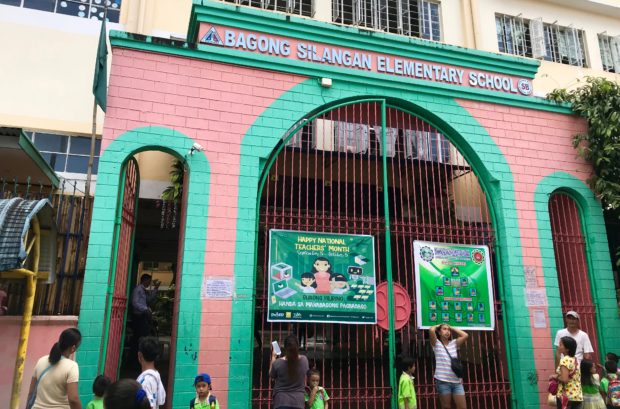
Bagong Silangan Elementary School. INQUIRER.net/Cody Cepeda
Milagros Moreno was in 4th grade when she received a stinging slap across the face from her teacher.
It is a memory she has since carried on throughout her life, its sense of pain more emotional than it was physical, yet one she has nevertheless held dear.
Moreno apparently had compared her test paper with a classmate and discovered her teacher marked her answer wrong when it should have been correct. Her reaction afterwards, perhaps not the least expected from the impishness of a child or a smart-aleck tongue, was what drove her teacher to hurt her.
“Taklesa ako eh. Sabi ko, ‘Ma’am, bakit chineck mo siya tapos ako mali? Parang may favoritism ka ata,’” Moreno recalled saying. “We were in front of my classmates. Sinampal niya talaga ako and then she told me go to the principal’s office.”
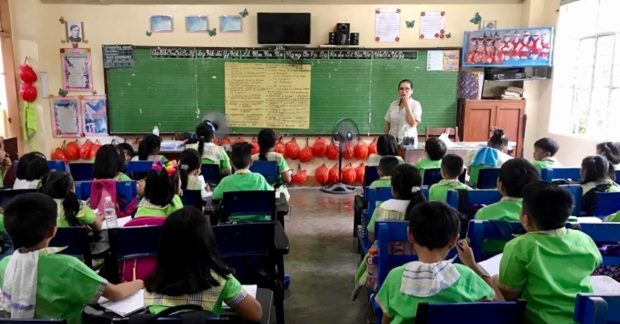
A grade 3 class at Bagong Silangan Elementary School. INQUIRER.net/Cody Cepeda
(I was tactless, I said, “Ma’am, why did you check her answer and crossed out mine? I think you got favoritism… She really slapped me…)
There is poignancy when she recalls this story, knowing full well it has carved out just what kind of person she continues to strive to be. In a turn of fate, she went on and became a teacher herself.
“That’s really… very painful on my part. Tinandaan ko ‘yun (I remembered that),” she said. “When I become a teacher or a professional, hindi ko gagawin sa eskwela ko [yun] (I would not do that in my schoolroom). I will love [my students].”

Teacher Jacqueline and Teacher MIlagros of BSES. INQUIRER.net/Cody Cepeda
The teaching life at this ‘new east’
Moreno, along with Jacqueline Ramos, are public school teachers at the Bagong Silangan Elementary School in Bagong Silangan, Quezon City, one of the biggest public schools in Metro Manila.
Moreno teaches Grade 3 Science in the afternoon and serves as adviser of Section 1 while handling four other sections in the same grade level. Ramos reports in the morning as a Grade 6 English and Araling Panlipunan teacher, handling six sections, with the 15th being her advisory class.
The two could not be so different yet alike at the same time, attributing the trajectory of how they became public school teachers to some kind of inexplicable pulling of the strings. It was a calling, they said.
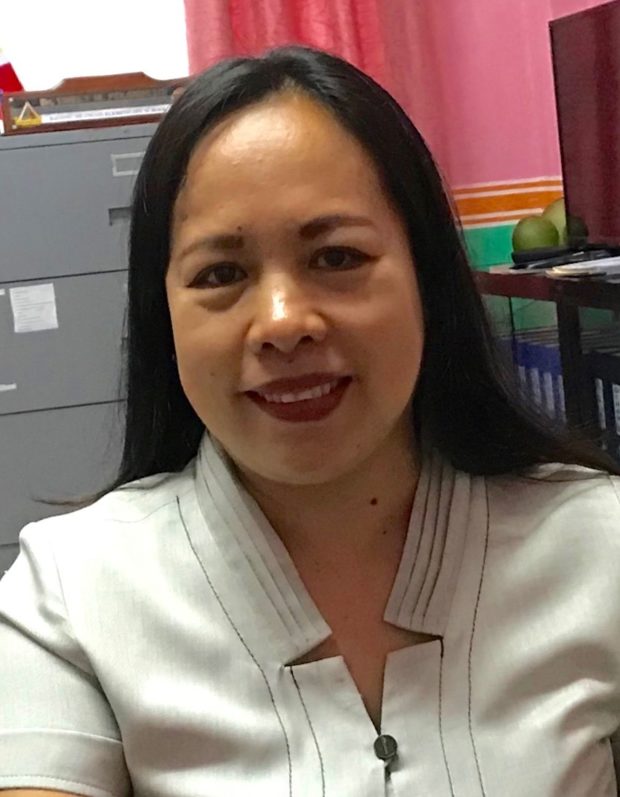
Teacher Milagros Moreno of BSES. INQUIRER.net/Cody Cepeda
Moreno graduated with a Bachelor’s degree in Hotel and Restaurant Management, but her longing to become a teacher never went away. After spending a year in Hong Kong, she realized she did not want to be a maid for the rest of her life and returned to the Philippines to take units in education.
Meanwhile, Ramos shifted from Computer Science to Secondary Education while in college, and later on earned another degree in Elementary Education. She became a private school teacher for nine years afterwards, but prayed in all those years to someday be placed in a public school. Her prayers were eventually heeded.
Being mothers in real life is an advantage for both Moreno and Ramos, who bring their nurturing yet austere approach to their students. They do not know, after all, the entirety of what goes on in the lives of their students. What kind of family do they go home to? The community they live in, their financial status? To stand as their second parents in school, Ramos believes, is but the only way they could do their part and give back to the community. And this goes for each and every one of their students, about 40 to 60 in a class, leaving them with over 200 hundred children to look after day in and day out.
“I keep telling [the] parents, every time we have parent-teacher meeting, na pinaninindigan ko yung (that I really take seriously being the) second parent inside the classroom,” said Ramos, who has been serving as a public school teacher for 10 years. “I (really) do believe that (the children have) something to do with the community and that is the only [way] I can help them.”
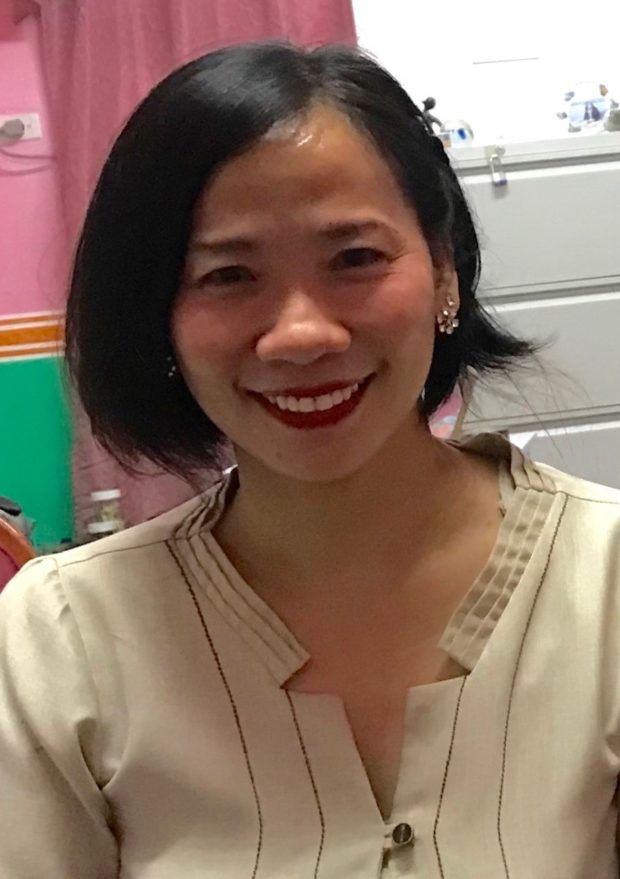
Teacher Jacqueline Ramos of BSES. INQUIRER.net/Cody Cepeda
Ramos also noted that many of their learners come from poor families, so she is relentless in encouraging them to dream. She herself studied in a public school and had no choice but to work as a young child just to help her family get by. But despite all of this, Ramos never once blamed her circumstances, nor did she ever consider leaving school, because she knew then that having an education would help her one day.
“Learners natin sa public school, mahirap. Totoo yung sinasabi na ang tanging makakakwento ng mahirap ay yung kapwa mahirap…” she said. “Yung silbi ko sa kanila [is] to encourage them. Continue life, enjoy being bata, but you have to value it, dapat nangangarap. Not totally [maging] isa kang [professional], but yung maalis ka sa kahirapan na meron ‘yung mga bata namin sa public school.”
(Our learners in public schools are poor. There is truth in the saying that only someone poor can speak to the poor. My purpose is to encourage them. Continue [living], enjoy being young, value it, and you must dream. Not necessarily to be a professional, but to pull yourself out of poverty, which is what our children in public schools have.)
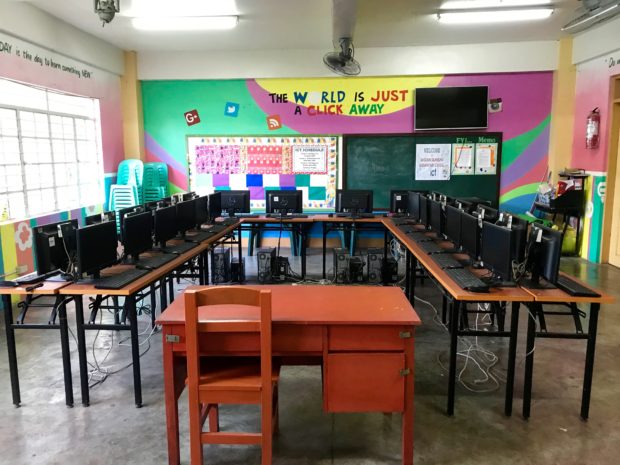
A simple computer classroom at Bagong Silangan Elementary School. INQUIRER.net/Cody Cepeda
One day, two teachers
Contrary to the concept of work-life balance, teaching cannot simply be demarcated by the clocking in and out of school. Being a teacher is a 24-hour affair, and Moreno and Ramos know this all too well, often bringing their remaining school tasks at home.
Going over their lesson plans for the following day is almost like a nightly ritual. For Ramos, having a daily log for her lessons helps in keeping track of what else she needs to do when she gets home. This means doing her own research to come up with extra activities and consulting different books and references for her lessons. She wants her learners to be used to doing various activities and exercises, because she has observed that these are what they learn from best, and these she prepares for at home.
Despite having a morning schedule, Ramos confessed that she sleeps late, usually getting about just three or four hours of sleep before having to wake up at 4 a.m. She sleeps late because she also has tasks as a mother and wife. Her usual routine at home is to rest for a while, eat with her family, wait for everyone else to be resting too, then dig in to her school activity preparations for the net day.
Moreno, meanwhile, who teaches in the afternoon, starts her day at 6 a.m. In the first hours of her morning, she plays the role of mother as she fusses over her children in their preparation to go to school. But like Ramos, she ends up sleeping at midnight, after she has completed her backlogs for work.
Her commute home, which takes about an hour, is already precious time lost, so she wastes no more of this by heading straight to the market while still in her school uniform.
“We sacrifice a lot. In my case, I don’t have [a] maid, so after my class… Imagine, (about) 7:30 [p.m.], I do the marketing… ‘Di pa ‘ko nakakabihis (I do not even get to change clothes), I go directly to the kitchen and prepare,” said Moreno. “One hour ‘yan, (cooking in the) kitchen… So my regular time for sleeping is 12 o’clock, I have only six hours to sleep.”
Consequently, the overlapping of work and private life had none of their children wanting to become teachers in the future.
“Ang nakakatuwa ‘dun, yung mga kids namin, nakikita nila,” said Ramos. “And dahil dun, ayaw nila maging teacher.” (None of our kids want to be teachers because of what they see.)
Moreno herself confessed that she is discouraging her children from being teachers, as she said in jest, “Don’t take up education!”
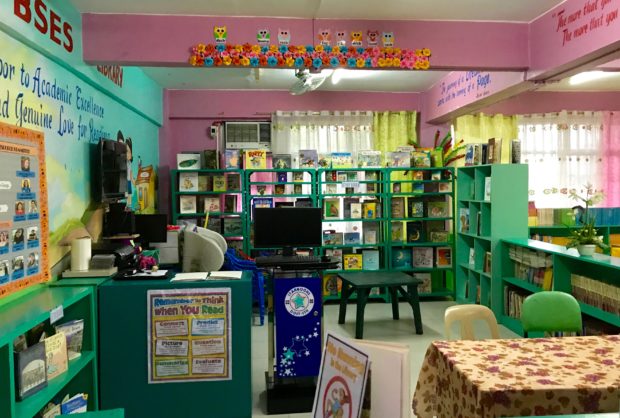
Library of Bagong Silangan Elementary School. INQUIRER.net/Cody Cepeda
Numbers are hard
Over 27 million students were welcomed back to public elementary and high schools for the school year of 2019-2020. Enrollment continues to rise in schools such as Bagong Silangan Elementary School (BSES), which had a total student population of 8,944 students in SY 2014-2015, as per the Department of Education. Moreno, however, estimates that the student population in BSES today is over 9,000.
The growing number of students in public schools every year has raised a serious need for more classrooms. Only 8,000 new classrooms out of the 64,000 that the DepEd has proposed has been approved by the Department of Budget and Management for this year. However, Education Undersecretary Alain Del Pascua told the Senate on Sept.12 that the actual number of classrooms needed in the country is 106,081.
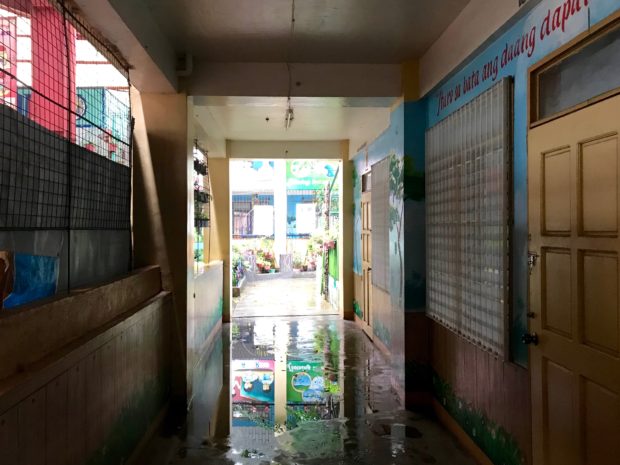
Bagong Silangan Elementary School ground floor hallway. INQUIRER.net/Cody Cepeda
The DepEd has proposed P171.1 billion for the construction of 64,000 classrooms for 2020, but the DBM approved only P20 billion for multi-level classrooms.
In BSES, the bigger classrooms on the 4th floor have since been divided to accommodate two classes in each.
“(We divide the classroom) into two, (because of the) 60 [students]… The principal wanted a smaller class, so (instead of one for) 60, (we make it for) 30, but you have to divide,” said Ramos. “So it is 30 (for a room). 30, 30, (but) you use the big classroom.”
Due to the huge number of students in BSES and the shortage of facilities, teachers are also left with no faculty rooms of their own. BSES was one of the schools identified by the Alliance of Concerned Teachers last June to have converted its comfort rooms to faculty rooms.
https://www.facebook.com/actph1982/photos/a.416944018344795/2444616282244215/?type=3&theater
This was after a Bacoor National High School teacher earlier revealed that they had no choice but to transform a comfort room into a faculty room — a reality that DepEd Secretary Leonor Briones then called an isolated incident.
Except, it was not an isolated incident. Other schools have also resorted to turning comfort rooms to faculty rooms due to shortage in facilities, such as the Maligaya High School, Sergio Osmeña High School, Quirino High School in Quezon City, Villamor High School and Calderon Elementary School.
“Hanggang ngayon, the Grade 6 faculty, it’s still the CR… It’s not a functional [comfort room],” said Ramos. “It’s already clogging and you cannot use that (because if you do, another room will be affected), so we use that… The space is not enough for us.”
Moreno also said the Grade 3 teachers do not have a faculty room, so teachers are usually found in different corners of the school during their vacant time.
“[Kung] saan saang sulok ng building kami matatagpuan,” said Moreno. “Doon kami gumagawa ng mga paper works sa extra time namin.”
(We can be found all over the building, in every corner, where we do our paper works during our extra time.)
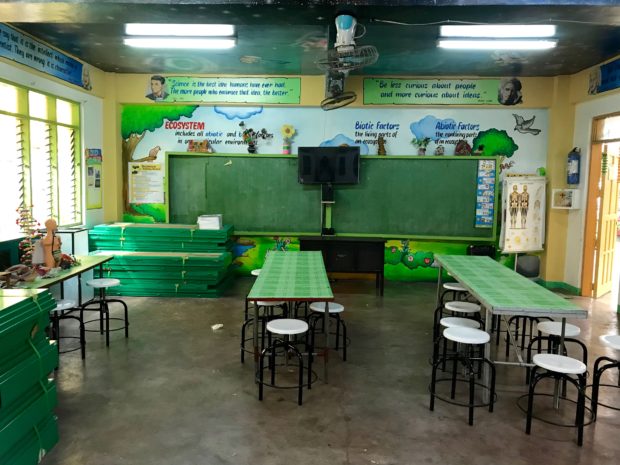
Science room of Bagong Silangan Elementary School. INQUIRER.net/Cody Cepeda
Life lessons from our dear public school teachers
Ramos and Moreno each have their sentiments regarding the hardships they experience in the public school system, but these are truths that they have learned how to swallow. They do know that being a public servant, after all, comes with its fair share of difficulties and these are met with acceptance, if not helpless resignation.
“Since you are in the system, kahit gusto mo magreklamo, pero nagtatrabaho. Kasi ano magagawa namin dun? We cannot do anything about [it], so you accept na lang what is there…” said Ramos. “So yung sentiment ng teachers regarding sa facilities, meron, pero parang lumulunok na lang din kami kasi bibigyan pa ba namin siya ng maraming pansin?”
(Since you are in the system, even when you want to complain, you still work. Because what can we do about it?… So the sentiment of teachers about facilities, we got that, but we swallow it, because would we still give attention to that?)
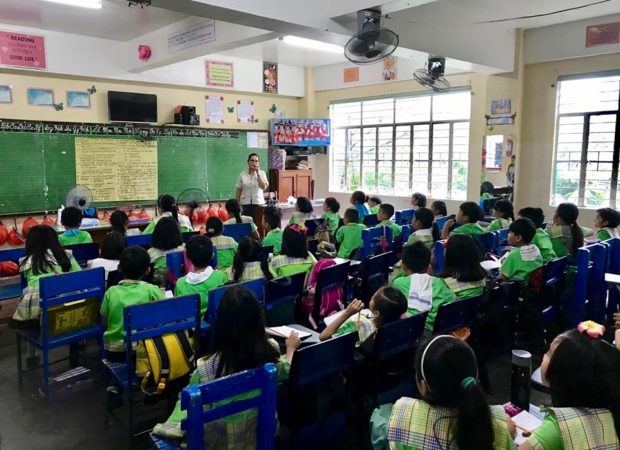
A grade 3 class at Bagong Silangan Elementary School. INQUIRER.net/Cody Cepeda
Moreno added that teachers already stress over many things inside the classroom and worrying about issues they have no control over seems just too much for the rest of them.
“Andami nang stress sa classroom namin tapos buong school pa, parang too much for us,” said Moreno. “Baka lumabas na lang kami sa sistema kung pati yun papansinin namin, so yung concern namin, yung talagang directly concern namin, yun ang tinututukan namin.”
(There is already so much stress in our classrooms; stressing over the entire school is already too much for us. We might just get out of the system if we would still pay attention to those. We instead attend to the things that directly concern us. We focus on that.)
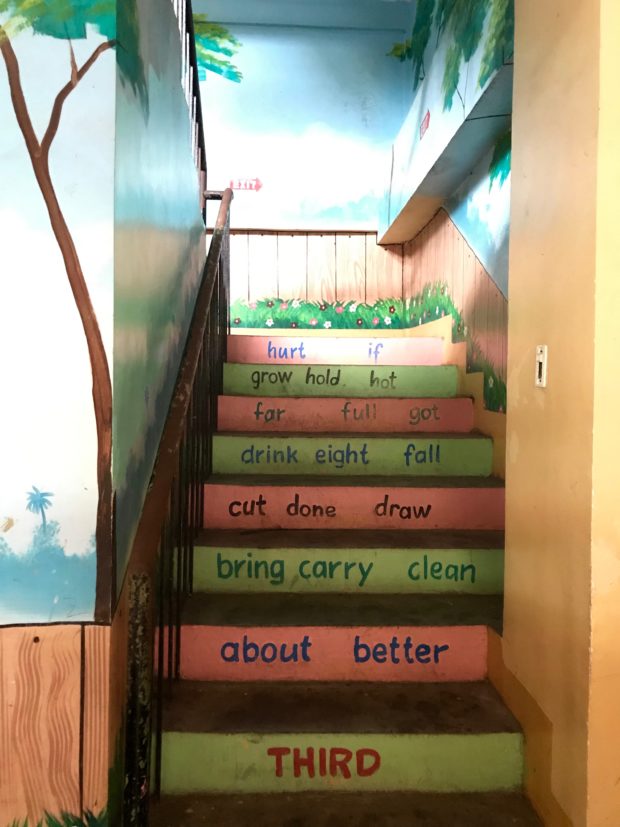
A stairway at Bagong SIlangan Elementary School. iNQUIRER.net/Cody Cepeda
Leaving the public school system, however, seems unthinkable for Moreno and Ramos. After all, when these issues are held against their sheer love for teaching and their students, the latter no doubt overpowers the former. Time and again, they have seen their students transform and succeed in their own way. It is not always apparent, nor does it happen instantaneously, but knowing they had a hand in effecting such change, even if just a little from the corner where they stand, almost makes all the sacrifices and weariness worthwhile.
Ramos often reminds herself the reason why she has lasted this long by reflecting on her own mortality. One day, she said, she would have to die and face her creator.
“Pag namatay ako, tatanungin [ako] ni Lord, anong ginawa mo nung teacher [ka]? So I wanted to answer that…” said Ramos. “Kasi it’s true, lahat tayo mamamatay, at every time that I see myself na it will happen, paano ko siya ikukwento?”
(When I die, God will ask me, “What have you done when you were a teacher?” I want to be able to answer that. Because it is true, we will all die, and every time that I see myself in that moment, I ask myself how I will answer.) JB
RELATED STORIES:
Solons to DepEd: Don’t blame teachers, solve school amenities shortage
From 24/7 service to ‘estero-telling’: Checking up on the state of public libraries